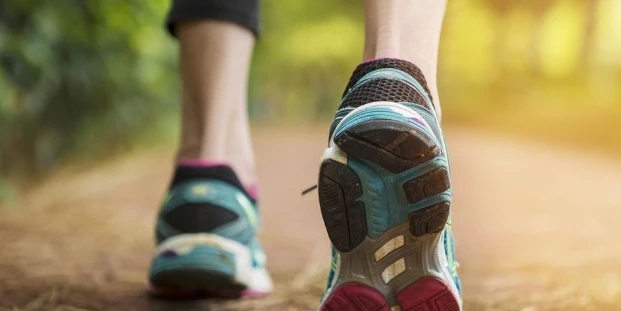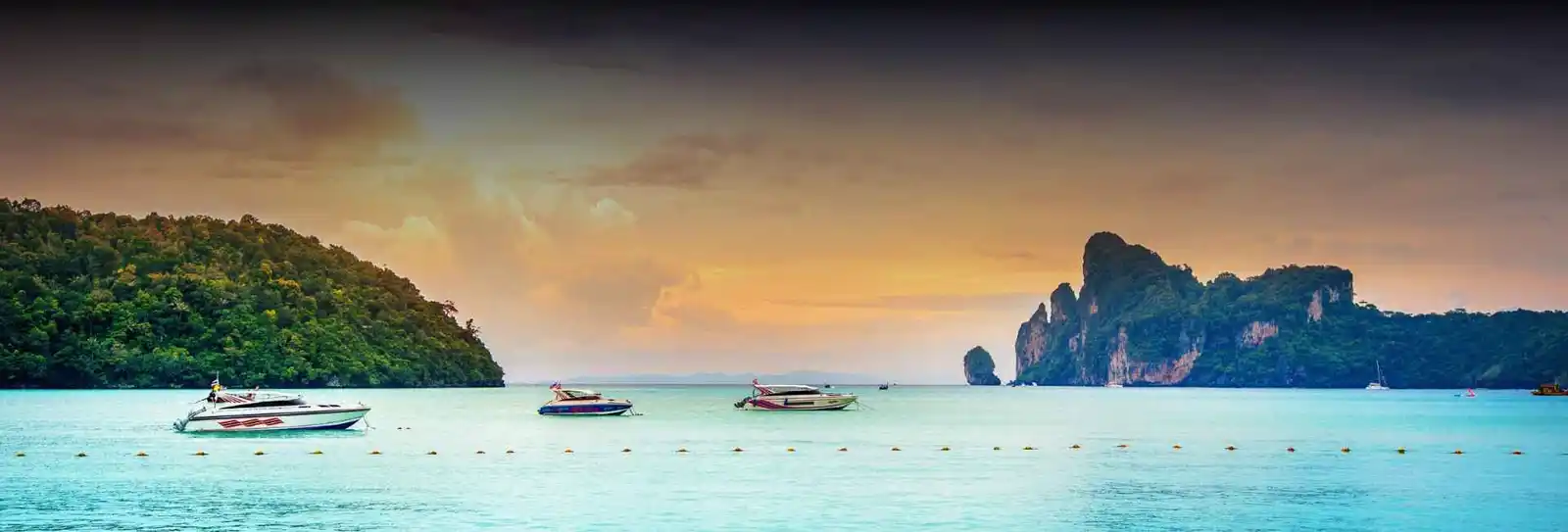
The first-time trek is a fun and fulfilling experience, but needs to be well planned so as to have a safe and rewarding experience. Whether you are trekking into the Himalayas or strolling a neighbourhood trail, good planning is the final guarantee of success. From selecting the most suitable trek based on your fitness level to carrying the equipment you need, this book takes you through every step so you are trek-ready.1. Begin Walking Today (It Is Never Too Soon to Start Training)If you are about to go on your first trek, one of the best things you can do for yourself is to begin walking today. Trekking is a physically rigorous sport requiring endurance, strength, and much mental toughness. Daily brisk walking is an easy and very effective method of developing your stamina and toughening your body against the demands of the trail. Start by walking short distances and over time, pick up the pace and duration. Attempt to walk at least 30 to 60 minutes every day on uneven terrain such as hills, stairs, and hard ground to toughen yourself to the trail conditions. As you develop your physical fitness, include a light load in a pack that simulates the pack that you will be wearing on the trek. These conditions affect your legs, back, and shoulders. Brisk walking prevents injury, builds cardiovascular stamina, and keeps muscles essential to trekking in shape. Anticipating body acclimatisation prevents the chaos of last-minute preparation. The sooner you start, the more comfortable and confident you will feel on the trail. Keep in mind that trekking is as much a test of endurance as it is fun, so buck up and get out there and take the first step in your adventure.2. Incorporate Leg-Based Cardio into Your TrainingConditioned, strong legs are your best friend on a hike, and adding leg-focused cardiovascular training to your exercise regimen can add considerable bulk to your endurance and performance on the trail. Stair climbing, hill walking, cycling, running, and trekking on uneven terrain all pound isolated muscle groups, quads, hamstrings, calf muscles, and glutes, which function mainly during trekking. They also acclimate the cardiovascular system and build strength so your body will function more effectively with oxygen at altitude. Begin 20-30 minutes of moderate-intensity leg-specific cardio three or four times weekly and gradually increase time and intensity. Stair climbing or hill sprints are particularly well-suited to simulate steep trail climbs. Additionally, interval training alternating short bursts of strenuous effort and recoveries is going to increase endurance and replicate the intensity profile of a real hike. Supplement these exercises with good stretching and recovery to avoid strain or harm. Gradually increasing your legs and lungs will have you walking down the trail more comfortably and with more assurance. Trekking is not strolling it requires renewable leg power and aerobic fitness, and this type of cardiovascular fitness will have you capable of tackling each climbing hill and long downhill grind without effort.3. Backpack ConditioningOne of the simplest things you can do to get ready for your inaugural trek is to condition with a backpack, that being the same one you'll be wearing on the trail. Backpack hiking involves different muscles than walking and will acclimate you to carrying the added load over longer distances. Begin with 3–5 kg of additional weight in your pack as water bottles, texts, or gear and carry it on your conditioning walk, stair walk, or day hike. Add more add-on weight as conditioning goes on, but don't overload too early in case of strain or pack loss. Backpack training builds posture, balance, and strength and conditioning of the back muscles and conditions the body to carry weight. It also provides room for adjusting the backpack fit so that it is comfortable and supportive. Backpack training can avoid shoulder strain, lower back strain, and improper load distribution on the trail. By the time your trek begins, your body will be well-adapted to the demands of carrying your gear, making the journey smoother and more enjoyable. The more realistic your training, the more confident and capable you’ll feel during the actual trek.4. Keep the Tank FuelledYour body is an engine, and while on trek, it needs the right fuel to keep going smoothly. Your trekking and training performance relies heavily on nutrition. Begin focusing on a balanced diet much earlier than your trekking experience, with an emphasis on complex carbohydrates, lean proteins, and healthy fats. Carbohydrates are the most fundamental source of energy for endurance activities by the body, so place whole grains, vegetables, and fruits at the centre of your diet. Protein supports repairing and rebuilding muscle after exercise, and the healthy fats help provide long-lasting energy. Getting enough water is equally as important, too drink water all day long, not only when exercising. When exercising, acclimate to little energy-accruing snacks such as nuts, trail mix, bananas, or energy bars in preparation to mimic what you will be eating on the trail. Acclimate your body to being able to digest food when you exercise. Steer clear of large, greasy, highly processed foods that'll weigh you down or make you feel crummy. Add nutrition into your prep, both for fitness, but also mental sharpness and endurance. Proper pre-hike nutrition and during-hike nutrition sustains endurance, prevents energy crashes, and helps with faster recoveries. Condition your body today with the right fuel, so that it's ready to carry you through every step of the way.5. Invest in a Good Pair of ShoesYour trekking boots are likely to be the most critical item you'll be carrying, and investing in a good pair can make or break your first trekking adventure. Hiking boots, unlike normal sports shoes, are made specifically to offer protection, grip, and support on bumpy, rocky, and occasionally slippery terrain. Choose those with high ankle support, rugged soles with deep tread, and a firm yet comfortable fit. Wear them extensively before your hike by wearing them on training walks or day hikes so as not to blister and ache throughout your hike. Pay attention to how your feet feel; there should not be pressure spots, pinching, or rubbing. Wet is the best for water-resistant or waterproof boots, while air-permeable materials dry and cool your feet on longer treks. Socks also work. Get your feet wet with moisture-wicking trekking socks so you do not end up with friction and your feet stay blister-free. Remember, your feet are going to be taking you step by step through the journey, so you will have to favour them and provide them with proper support. The well-fitting, robust pair of trekking boots so that you can have the adventure, not torture, and gain confidence with each step that you take into the unknown.6. Stay Nourished and HydratedProper hydration and good nutrition are necessary to sustain your energy, concentration, and endurance while trekking. Hydration regulates body temperature, avoids exhaustion, and sustains muscle function while training or already on the trek. Drink a glass of water in the morning and continue to drink small quantities of water throughout the day instead of waiting until you feel thirsty. When trekking, try to drink 2–3 litres of water daily, depending on whether you are trekking in a high-altitude or heat area. Wear a hydration bladder or bottle with easy access so you do not have to stop and take a drink. Along with water, your body will also require constant fueling. Consume several small meals with high-density complex carbs in the presence of whole grains, fruit, and nuts to create an ongoing source of energy. Add sources of protein, like eggs, lentils, or trail mix made from seeds, to repair muscle. Steer clear of foods and energy drinks that provide instant impact followed by a crash. If you are going to be hiking for a few days, light, high-calorie foods such as energy bars, dried fruits, and peanut butter are great options. Adequate nutrition and hydration daily keep your body in the best condition and heal quicker, so you can take in the scenery of the trail without the negatives of fatigue, cramps, or headaches.7. Know Trekking EtiquiquetteTrekking isn't reaching the summit, it's also showing respect for nature, fellow travellers, and the local villages. Simple respect on the trek can allow us all to enjoy the trail and leave the world to future generations. Always follow the "Leave No Trace" ethic: carry all your trash out with you, never dig up plants by their roots or otherwise disturb wildlife, and tread on trails to minimise erosion and habitat disruption. Give way to climbers, since their direction is more uphill, and always be polite while passing or being passed. Keep the sound down, let nature’s song take centre stage and don't blare music in public nature reserves. Be respectful of local culture and dress modestly when walking through villages or holy places. When trekking in a group, maintain a reasonable pace and glance back at slower members instead of falling off the back at full speed. Always ask first if photographing humans or their domain. Small gestures such as greeting fellow trekkers or helping a distressed person go a long way in developing a trekking community of good manners. Polite behaviour not only enhances your own experience but makes a cleaner, safer, and more polite trekking environment for all others as well.8. Have Basic First Aid and SafetyEven though you may be trekking in some relatively deserted areas, you may not always have the benefit of instant medical help. Safety and first aid, then, form a part of the pre-requisite training for your trek. Knowing how to deal with minor accidents like cuts, blisters, sprains, and insect bites will see to it that minor discomforts don't become major problems. Carry a small first aid kit with band-aids, antiseptic wipes, gauze, pain relievers, tweezers, blister pads, and any prescribed medication. Understand symptoms of altitude sickness, dehydration, and heat exhaustion. Early detection and fast action could be the difference between life and death. It is also well to know how to use a map, compass, or GPS receiver and to carry an emergency whistle and flashlight in the event of getting lost or stranded at night. If hiking in a group, share your safety information and have someone always in charge of having a copy of your schedule and expected return time. Warming up to a beginner's first aid class or simply watching tutorial videos can render you proficient and confident enough to remain level-headed in emergencies. Preparing yourself not only keeps you safe but also makes you capable of responding if another individual requires your help, and you are a trustworthy and believable trekker.9. Prepare MentallyTreking is half mental and half a physical challenge. Mental preparation is also necessary so you can manage to complete your first trek and enjoy the experience to the fullest. Your patience, perseverance, and responsiveness to changing weather, landscape, and situations will be tested. Good attitudes keep you going despite challenges and frustration at bay. Imagine your hike beforehand, gaze out at the view, listen to the noises, and pay attention to how you will feel while you're getting somewhere. Breaking the hike into segments and setting realistic goals renders the distance less daunting. Use mindfulness skills such as meditation or directed breathing to keep tension and focus in check. Go with the surprise; flexibility is key when weather or other conditions call for an adjustment in plans. Mental preparation includes embracing adversity, be it sore muscles, exhaustion, or sleeping in strange places, and reframing them as a part of the adventure. Have supportive friends or fellow hikers around to share encouragement and motivation. Mental toughness develops over time, so each trek strengthens your confidence. As you condition your body and mind, you get yourself ready to love every step and bask in the fulfilling pride of achievement that results from reaching new heights.Why Book with escape2exploreWhen exploring Treks in Karnataka and beyond, escape2explore stands out as a trusted name in adventure and experiential travel. Here’s why hundreds of travellers choose us for their getaways:Trusted, Well-Reviewed Local Operator: escape2explore has gained the trust of thousands of content tourists all over India. With persistent positive feedback and an unblemished reputation for delivering quality experiences, we assure you that your experience will be hassle-free, memorable, and value-packed. Our insider local knowledge guarantees that you will always be in safe hands.Seasoned Guides: Our trips are led by friendly, trained, and professional guides who are passionate about the outdoors and your safety. Whether it's a beach trek, a cultural tour, or a spiritual walk through temples, our team knows the terrain, the stories, and how to make each moment count.Safe & Curated Itineraries: Your safety is our number one priority. Our tour packages are thoughtfully crafted with safety measures, researched accommodations, and easy travel arrangements. We take care of the details so you can have the experience hassle-free and worry-free.Unique Experience That You Won't Find Anywhere Else: With escape2explore, you discover more than the tourist attractions. We go off the beaten track with hidden beaches, unusual treks, offbeat cultural destinations, and true interactions.Read: Sustainable Travel in India |Dream Trip to India |Active and Relaxing Trips in India |Maharastra hidden Trails |Easy Treks in India


